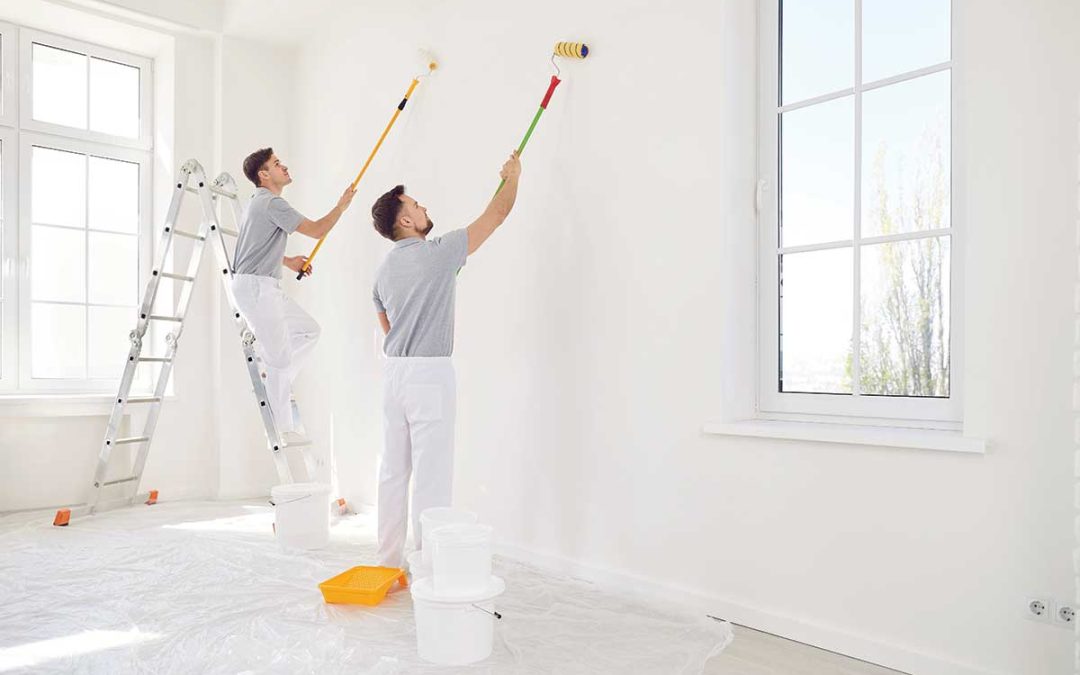Winter is a fantastic time to refresh your home’s interior with a new coat of paint. While many associate painting projects with warmer weather, winter provides unique advantages but comes with difficulties.
If you want to take advantage of the colder months to paint your house or business, our professional painters share their best interior painting tips for winter here. Here’s how to ensure a smooth and successful result:
Can You Paint in Cold Weather?

- Is the indoor temperature stable and within the recommended range for painting?
- Do I have proper ventilation in the space to reduce fumes and ensure the paint cures effectively?
- Can a painting project disrupt any significant holidays, gatherings, or events?
- Is the humidity in my home balanced? Do I need to use a humidifier or dehumidifier to maintain optimal conditions for painting?
- Am I able to allocate enough time to let the paint dry between coats without rushing the process?
- Given the shorter daylight hours in winter, do I have adequate lighting in the space to ensure even application?
- Will painting in the winter help me save time, money, or effort compared to waiting until another season?
If most of your answers were “yes,” it might be worth it to try your interior painting project despite the cold weather. To ensure your project’s success, we share our best interior painting tips for winter below.
1. Prepare Your Space
Any painting project, whether during summer or winter, requires adequate preparation. Before starting, make sure to prepare the surface with a damp sponge to reduce any dirt and grime that could prevent the paint from fully adhering to it. If there are any repairs that have to be done, you want to address those first, too.
2. Choose The Right Paint
Painting during winter requires quality paints. The extreme conditions affect the way paints dry, and because there is less ventilation, paint fumes can contaminate your spaces. For this scenario, paint manufacturers offer low-VOC paints, which are the best choice. These paints emit fewer odors.
3. Control the Temperature and Humidity
Air temperature is one of the main factors determining whether you have a successful winter painting project. If you paint with cold temperatures below the recommended range, you won’t obtain the results you want since colder weather augments drying times or prevents the paint from drying at all.
So, what is the ideal temperature for painting during winter? 50°F to 85°F is advised. Before you paint, you should check the weather forecast or use your heater and adjust your thermostat to maintain a consistent temperature.
Another decisive factor when painting during fall or winter is humidity, which you also want to monitor. Winter air tends to be dry, but if the relative humidity is high, it will slow drying times between coats. A dehumidifier can help you avoid a humid environment. However, be careful not to overheat the space.
4. Ensure Proper Ventilation
When it comes to painting during fall or winter, the most challenging part is waiting for the paint to dry. Proper ventilation is key to speeding up the painting process and preventing dangerous fumes from getting trapped in your spaces if you want to accomplish your project without delays.
If you choose to paint in the winter, you must ensure your room has proper ventilation. You can also increase ventilation by opening your interior doors and windows or turning on a fan. This winter painting tip ensures the paint dries evenly and reduces lingering odors.
5. Work Slowly
Patience is the main thing you want to have when painting during the winter months. There is no rushing the process, and doing so can have adverse effects. Before you start, make sure you have enough time to tackle your project. After you do, you want to wait enough time between every fresh coat. Ensure each coat is thin and dries completely before applying a second coat.

The Best Interior Painting Solution for Every Season!
Painting during winter can be a great option, but if our interior painting tips for winter still haven’t convinced you, our superior painting solutions might.
We offer licensed and insured painting solutions at David’s Remodeling Services LLC at competitive prices.
With our extensive knowledge, we provide the best painting advice and solutions. Contact us today for further consultations!

